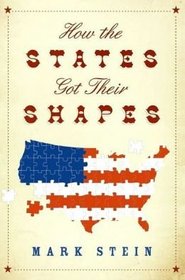Helpful Score: 2
If you are expecting cute trivia, this is not the book. This book explains the boundaries, of each state. I learned a great deal that I never knew. It is not a dry or boring book. It is easy to understand. It will cover many boundary disputes that occurred between states, some wars.
Hey, spoiler alert. Most of had to do with boundaries of rivers, and mountains, politics, wars, and compromises.
Hey, spoiler alert. Most of had to do with boundaries of rivers, and mountains, politics, wars, and compromises.
Helpful Score: 2
This is a very fascinating book for anyone interested in the subject at hand, namely, the states and how their borders became what they are. In fact, this would easily be a four star book at least, if not five, for its thoroughness on the subject, except for one issue that I need to agree with reviews I've read on. The book is very repetitive. The layout being what it is, going through all the states (and the District of Columbia) alphabetically, and dealing with each of their borders individually, does guarantee that every border gets thoroughly covered and nothing gets accidentally forgotten or excluded, but it also means that virtually every border gets mentioned at least twice (and often even more than that), since two neighboring states obviously share the same border, causing the border to be described in the section for both states. To cut down on the repetitiveness would require an awful lot of skipping around in the book. Though, to the author's credit, he does make great use of "for more detail, see..." phrasing, rather than repeat the same stories over and over. So, at least they are only touched on when they get repeated, instead of being always given in full detail. Still, it gets a bit dull by the end. If I had it to do over again, I'd go through the book slowly, a section or two at a time, rather than reading it cover to cover, so my brain wasn't bombarded with the same thing over and over for hours. So, if you're interested in this book, that's what I highly recommend you doing as well.




